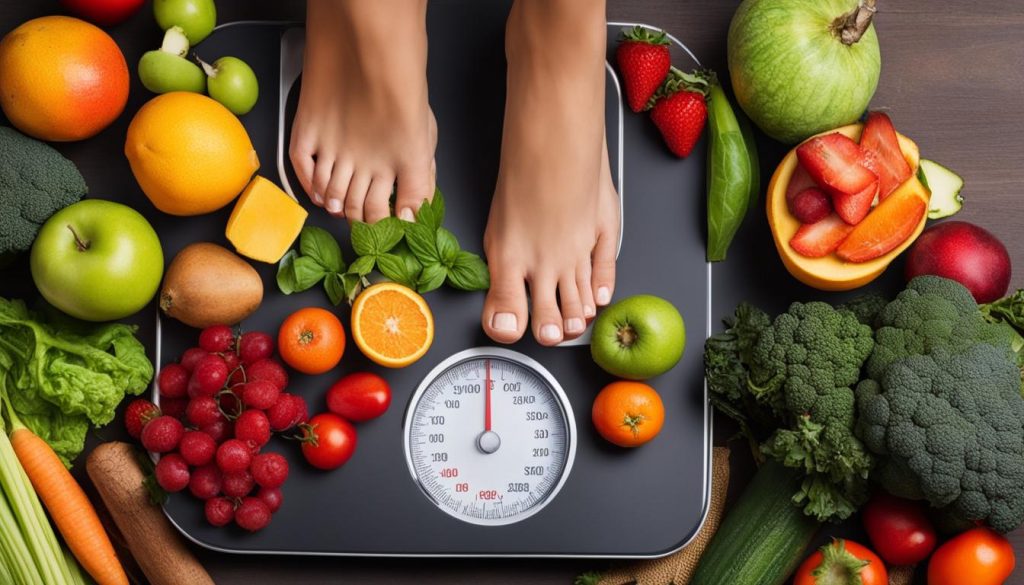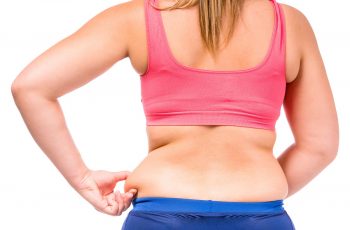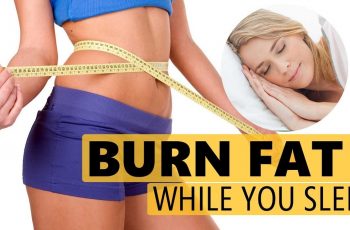Today, I want to talk about a common question many people have when it comes to weight loss: How long does it take to lose 20 pounds?
Before we dive into the details, let me assure you that losing 20 pounds is an achievable goal. With the right approach and a little determination, you can make significant progress towards shedding those extra pounds. So, let’s explore the various factors that can influence the duration of your weight loss journey.
Key Takeaways:
- There is no one-size-fits-all answer to how long it takes to lose 20 pounds. It depends on various factors such as your diet, activity level, metabolism, and genetics.
- Aiming to lose 1-2 pounds per week is a healthy and realistic goal for most individuals.
- Quick fixes and drastic measures are not sustainable in the long run. Focus on making sustainable lifestyle changes for lasting weight loss.
- Consult with a healthcare professional before starting any weight loss program to ensure it is safe and suitable for your individual needs.
- Losing weight is a journey that requires commitment, patience, and a focus on long-term health.
Realistic Timelines for Losing 20 Pounds
When it comes to losing 20 pounds, it’s important to set realistic timelines that align with your overall health goals. The duration to lose 20 pounds can vary depending on several factors, including your diet, age, activity level, metabolism, and genetics. It’s essential to focus on sustainable weight loss rather than quick fixes.
On average, aiming to lose 1-2 pounds per week is considered a healthy and realistic goal. This means that it could take anywhere from 10-20 weeks, or approximately 2.5-5 months, to lose 20 pounds. However, it’s important to note that individual results may vary.
It’s also worth mentioning that individuals who are significantly overweight may experience faster weight loss initially, while those who are closer to their healthy weight may experience a slower rate of weight loss. The key is to stay consistent and make long-term lifestyle changes that support sustainable weight loss.
The Importance of Sustainable Approaches
While it may be tempting to search for quick solutions or extreme diets promising rapid weight loss, it’s crucial to prioritize your overall well-being. Rapid weight loss can often lead to muscle loss, nutrient deficiencies, and rebound weight gain, ultimately impacting your health negatively.
By focusing on sustainable weight loss approaches, such as balanced eating, regular exercise, and healthy lifestyle habits, you can achieve your weight loss goals in a way that promotes long-term health and well-being. Remember, it’s not just about the number on the scale but also about creating a sustainable and healthy lifestyle that you can maintain in the long run.
Tips for Successful Weight Loss
If you’re looking to lose 20 pounds, there are several key tips and strategies that can help you achieve your goal. These tips are backed by science and can contribute to effective and healthy weight loss.
1. Set Realistic Goals
When embarking on a weight loss journey, it’s important to set realistic goals. Losing 1-2 pounds per week is a safe and sustainable rate of weight loss. While it might be tempting to strive for rapid results, taking a slower approach ensures that you’re focusing on long-term success.
2. Follow a Balanced Diet
A balanced diet plays a crucial role in weight loss. Focus on consuming a variety of nutrient-dense foods, including fruits, vegetables, lean proteins, whole grains, and healthy fats. Make sure to create a calorie deficit by consuming fewer calories than you burn each day.
3. Incorporate Regular Exercise
Exercise is an important component of successful weight loss. Aim for at least 150 minutes of moderate-intensity aerobic activity or 75 minutes of vigorous-intensity activity per week. Additionally, include strength training exercises to build muscle and boost metabolism.
4. Practice Mindful Eating
Mindful eating involves paying attention to your body’s hunger and fullness cues. Slow down while eating, savor each bite, and listen to your body’s signals of hunger and satisfaction. This can help you avoid overeating and make healthier choices.
5. Get Adequate Sleep
Sleep plays a crucial role in weight management. Aim for 7-9 hours of quality sleep each night. Lack of sleep can disrupt hormone levels, increase appetite, and contribute to weight gain.

Losing 20 Pounds in a Month: Is It Realistic?
When it comes to weight loss, losing 20 pounds in a month is often seen as an ambitious goal. However, it’s important to consider whether rapid weight loss is both realistic and sustainable. While it may be possible to achieve this level of weight loss in a short amount of time, it’s not advisable for several reasons.
Rapid weight loss, such as losing 20 pounds in a month, can lead to various health risks. One of the main concerns is the potential for muscle loss. When you lose weight quickly, a significant portion of the weight loss may come from muscle mass, which can have negative long-term effects on your metabolism and overall strength. Additionally, rapid weight loss can result in nutrient deficiencies, as crash diets or extreme calorie restrictions often do not provide the necessary nutrients for optimal health.
Another factor to consider is the potential for rebound weight gain. When you lose weight too quickly, your body may respond by slowing down your metabolism to conserve energy. This can make it difficult to maintain the weight loss in the long term and may lead to regaining the lost weight once normal eating habits resume. It’s important to focus on sustainable, healthy lifestyle changes that promote gradual and long-lasting weight loss.
The Importance of Realistic Weight Loss Goals
Instead of aiming for rapid weight loss, it’s recommended to set realistic weight loss goals that prioritize your overall health. The Centers for Disease Control and Prevention (CDC) suggests aiming for 1-2 pounds of weight loss per week as a healthy and sustainable rate. By focusing on gradual weight loss, you can make sustainable lifestyle changes that become habits, leading to long-term success in maintaining a healthy weight.
How to Lose 20 Pounds: 8 Science-Backed Strategies
If you’re looking to lose 20 pounds, there are science-backed strategies that can help you achieve your weight loss goals. These strategies have been studied and shown to be effective in promoting weight loss and improving overall health.

1. Set Realistic Goals:
Setting realistic goals is crucial when it comes to losing weight. Instead of aiming for rapid weight loss, which can be unsustainable, focus on losing 1-2 pounds per week. This gradual approach not only increases the likelihood of keeping the weight off but also allows your body to adjust to the changes.
2. Practice Portion Control:
Controlling portion sizes is an effective strategy for managing calorie intake. Use smaller plates and bowls to help you eat less without feeling deprived. Additionally, paying attention to hunger and fullness cues can help prevent overeating.
3. Eat a Balanced Diet:
A well-balanced diet that includes a variety of fruits, vegetables, lean proteins, whole grains, and healthy fats is essential for weight loss. Focus on nutrient-dense foods that provide essential vitamins and minerals while keeping you satisfied.
4. Get Moving:
Incorporating regular physical activity into your routine is key to losing weight and maintaining a healthy lifestyle. Aim for at least 150 minutes of moderate-intensity exercise or 75 minutes of vigorous exercise each week. Find activities you enjoy to make it easier to stick to your exercise routine.
5. Stay Hydrated:
Drinking an adequate amount of water can support weight loss efforts. Water helps to increase satiety, boost metabolism, and reduce calorie intake when consumed instead of sugary beverages. Carry a water bottle with you throughout the day and make it a habit to drink water regularly.
6. Get Enough Sleep:
Getting adequate sleep is often overlooked but plays a crucial role in weight management. Lack of sleep can disrupt hunger hormones, leading to increased appetite and cravings. Aim for 7-9 hours of quality sleep each night to support your weight loss goals.
7. Manage Stress:
High levels of stress can contribute to weight gain and hinder weight loss efforts. Find healthy ways to manage stress, such as regular exercise, deep breathing exercises, meditation, or engaging in hobbies you enjoy. Taking care of your mental well-being is just as important as physical health.
8. Seek Support:
Having a support system can make a significant difference in your weight loss journey. Reach out to friends, family, or join a weight loss group to stay motivated and accountable. Surround yourself with individuals who share similar goals and can provide encouragement along the way.
By following these science-backed strategies, you can lose 20 pounds and achieve your weight loss goals. Remember to consult with a healthcare professional before starting any weight loss program to ensure it is safe and suitable for your individual needs.
Conclusion
In conclusion, losing 20 pounds requires dedication and a long-term approach to health. It’s important to set realistic goals and understand that the timeline for weight loss can vary for each individual. While some may be able to lose 20 pounds in a month, it is generally not sustainable or healthy.
Instead, focusing on losing 1-2 pounds per week is a safe and achievable goal. This allows for gradual weight loss, which is more likely to be maintained in the long run. Remember, it’s not just about the number on the scale, but also about adopting healthy lifestyle habits that support overall well-being.
By following a balanced diet, engaging in regular exercise, and prioritizing self-care, you can successfully lose 20 pounds and maintain a healthy weight. It’s always a good idea to consult with a healthcare professional before starting any weight loss program to ensure it aligns with your individual needs and health.
FAQ
How long does it take to lose 20 pounds?
The timeline for losing 20 pounds can vary depending on factors such as your diet, age, activity level, metabolism, and genetics. On average, aiming to lose 1-2 pounds per week is a healthy and realistic goal. This means it could take anywhere from 3 months to three years to lose 20 pounds.
Is it possible to lose 20 pounds in a month?
While losing 20 pounds in a month may be an ambitious goal, it is generally not realistic or sustainable. Rapid weight loss can often lead to muscle loss, nutrient deficiencies, and rebound weight gain. The Centers for Disease Control and Prevention (CDC) recommend aiming for 1-2 pounds of weight loss per week for healthy and sustainable results. It’s important to focus on long-term lifestyle changes rather than short-term, drastic measures.
What are some tips for successful weight loss?
Successful weight loss involves a combination of diet, exercise, and lifestyle habits. Here are some tips to help you lose 20 pounds and keep it off:
– Follow a balanced diet that includes plenty of fruits, vegetables, lean protein, and whole grains.
– Incorporate regular exercise into your routine, aiming for at least 150 minutes of moderate-intensity aerobic activity per week.
– Stay hydrated by drinking plenty of water throughout the day.
– Get enough sleep, as lack of sleep can disrupt your metabolism and lead to weight gain.
– Manage stress through relaxation techniques, such as meditation or yoga.
– Avoid fad diets and focus on sustainable, long-term changes that you can maintain.
How to lose 20 pounds: 8 science-backed strategies
When it comes to losing 20 pounds, there are science-backed strategies that can help you reach your goal. These include:
– Eat a balanced diet that is rich in nutrients and low in added sugars and processed foods.
– Incorporate strength training exercises into your routine to build muscle and increase metabolism.
– Practice portion control to ensure you’re not overeating.
– Stay consistent with your exercise routine, aiming for at least 5 days of moderate-intensity activity per week.
– Prioritize sleep and aim for 7-9 hours of quality sleep each night.
– Stay hydrated by drinking enough water throughout the day.
– Track your progress and make adjustments as needed.
– Seek support from a healthcare professional or a registered dietitian for personalized guidance and support.
Remember to consult with a healthcare professional before starting any weight loss program to ensure it is safe and suitable for your individual needs.




